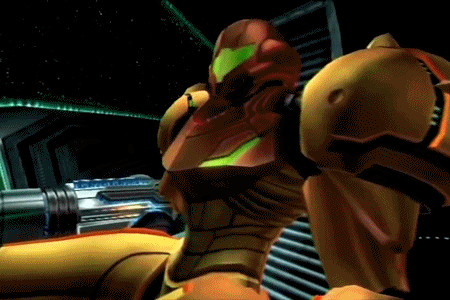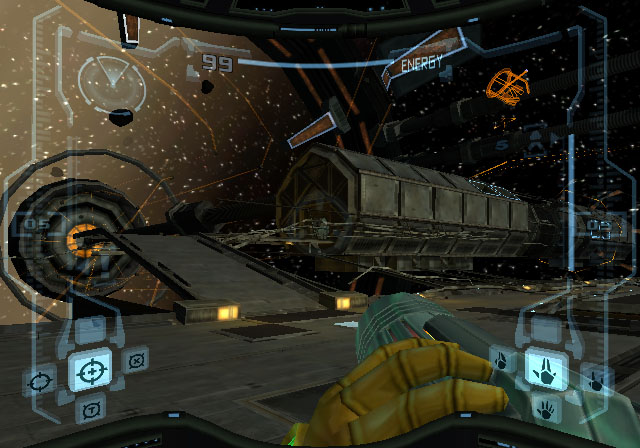MDb 2018 Year in Review
Ryan (Webmaster, Site Designer/Artist, Social Media Editor)
Hey fam. We have done our best to carry the Metroid community through this lull. We’re used to it by now though – we’ve done it several times in the past. I think when it comes to Metroid fans, we’re quite hardened with the wait. We waited 8 years between Super and Prime/Fusion, and we waited 7 years between MOM and Samus Returns (Not counting Fed Force for obvious reasons). So yeah, at this point most of you should be like, “We’ll wait, it’s worth it.”
I am ecstatic that Ridley and Dark Samus were added to Smash Ultimate, however Dark Samus being a near-exact duplicate echo fighter has proven to be a huge disappointment. No cool Phazon-based moves beyond her charged shot? C’mon guys, you could’ve done a little better than that. You can watch a Let’s Play of any of the Dark Samus battles and imagine countless different ideas and ways to improve or spice up her moveset. For me, Samus in Smash has been going way downhill ever since Brawl. She just doesn’t seem to be able to knock people off the stage that well. And though they did give her a little more power this time around, she’s still slow and floaty and her smash attacks are still weak and easy to miss. At least her Screw Attack seems to be a little more improved. Maybe it’s time to main someone else, perhaps ZSS or Corrin? That Ridley, though.
In regards to other things, I was very impressed with the Prime 3 Samus Figma which I apologize for still not writing a review on. Don’t worry though – it’s gonna happen someday! Hopefully next year. Speaking of merch, we also seem to be getting a little bit harder than the usual trickle of Metroid merch, so someone at Nintendo must be listening. Still waiting on a Metroid series artbook, Nintendo. Ball’s in your court, guys.
Rue (Site Editor, Social Media Editor)
A bit of an uneventful year for Metroid fans. The most disappointing news being the lack of new (or any for that matter!) information on Metroid Prime 4. I was so sure that this years Gaming Awards would have a teaser of sorts to keep us satiated but that was not the case. Even the rumored Metroid Prime Trilogy, for the Nintendo Switch, was a no-show.
The most interesting development this year, for me, was Brie Larson’s desire to portray Samus in a Metroid film. Regardless of what said film would/could be, just having someone of influence expressing interest in the Metroid franchise is a positive in my eyes. Keeping a high-profile public interest in Metroid can hopefully get the message across to Nintendo that we need more Metroid games in our life!
Here’s hoping 2019 is filled to the brim with substantial Metroid goodness!

Lillith (Social Media Editor)
2018 was a bit of a lackluster year for Metroid. Although we got Ridley and Dark Samus in Smash Ultimate, there have been no real updates on the platform title Nintendo has previously announced. I have hopes for 2019 to be the Year Of The Metroid, but only time will tell if we’ll get anything. A trailer, some game footage, something, PLEASE! A Prime Trilogy remake might be enough to tide me over ’til the new game…. but I’ll have to wait and see. Onward to 2019!
On behalf of the Metroid Database, we want to wish you all a Happy New Year 2019!

Super Metroid Developer Interview reveals Romantic Easter Egg
A recently translated developer interview from 2007, courtesy of Shmuplations.com, has revealed that Super Metroid programmer Yasuhiko Fujii (in charge of boss and enemy sprites/hitboxes, etc.) hid a romantic message to his then girlfriend, “Keiko.”
Here’s a quick rundown on the discovery from GameXplain:
https://www.youtube.com/watch?v=a-rqC2E0kTE
Yasuhiko Fujii explains the code he hid in the game:
—Were there any scenes in Super Metroid that were your idea(s)?
Fujii: Actually, before the fight with Draygon, the boss of Maridia, there’s a group of Evir enemies that do a little “dance”. Their movements actually trace out the letters of a phrase in English, “Keiko Love”! Keiko was the name of a girl I was dating at the time. I was busy with work all the time and couldn’t see her much, so at night while everyone at the office sleeping, I stole a moment and snuck that code in!
That little Evir dance wasn’t written in the planning documents anywhere, so I remember my heart beating fast as I coded it, with the worry of it being discovered… but in the end, no one ever found it out. Now isn’t that a romantic story? (laughs)
Read the rest of this interview at Shmuplations.com to find out the development codename for Super Metroid bosses and which prominent Nintendo figure liked to play the shakuhachi flute next to the Super Metroid programmers offices. A must read.
Artist BossLogic imagines Brie Larson as Samus.
A very cool, profile render of what Brie Larson would look like as Samus Aran, in a Metroid film, by artist BossLogic via Twitter. Let us know what you think of the news of Brie Larson wanting to play the role of our favorite bounty hunter by answering our poll or leaving a comment below.
You’re making my dreams come true!
— Brie Larson (@brielarson) November 4, 2018
Click on the images below to enlarge.
Metroid Prime, Level by Level

To celebrate Metroid Prime’s impending return, Kyle Rentschler (from goombastomp.com) has dedicated a series of fantastic ‘Level by Level’ articles to the main areas in the original Metroid Prime. A fascinating series of reads that meticulously analyze these classic levels and lore with X-Ray Visor precision.
Metroid Prime begins with Samus tracing the distress call of the Frigate Orpheon, a Space Pirate frigate that escaped the fall of Zebes and entered orbit around Tallon IV to perform Phazon experiments on various life forms. Hours before Samus boards the derelict craft, a pair of Parasite Queens broke out of their enclosures and wreaked havoc aboard the frigate, prompting the Space Pirate crew to emit a distress signal before most of them abandoned ship. While the remaining Space Pirates managed to take down one of the Parasite Queens, the other acts as Metroid Prime’s first boss fight, an encounter that takes place after Samus has explored the main throughway. Upon beating the boss, the frigate enters self-destruct mode, and Samus must quickly rush back to her ship. En route through the ventilation system, Samus runs into a rebuilt Meta Ridley and loses her upgrades due to an explosion in a hallway. Once the Frigate Orpheon detonates, its remains can be revisited on Tallon IV, where it curiously bridges the Tallon Overworld and the Phazon Mines.
The Frigate Orpheon is a small, compact area that acts as more of an isolated tutorial than a part of a cohesive world. Its mechanical, interiorized setting stands out from the rest of Metroid Prime’s first half, and acts as a precursor to later game settings, like the similarly industrial Phazon Mines. In some regards, the Frigate Orpheon is aesthetically bland, especially upon subsequent visits, when it serves mainly as a desolate viaduct to the Phazon Mines. However, its initial interstellar setting and the actively unfolding events it houses provide a sense of ambient vitality essential to Metroid Prime and the unique environmental storytelling it famously popularized. Despite this forward-propelling narrative thrust, the Frigate Orpheon exudes an aura of isolation amidst its danger, setting the scene for several of Metroid Prime’s dominant themes and moods.



